Choosing the best wood for a kitchen island involves considering a variety of factors, including durability, aesthetics, maintenance, and cost. Kitchen islands often serve as the focal point of a kitchen, combining functionality with style. The type of wood used in constructing the island significantly influences its overall appearance, longevity, and suitability for various kitchen activities. Whether you use your kitchen island primarily for food preparation, dining, or as a design centerpiece, the choice of wood is critical in ensuring that it meets your needs and preferences.
Hardwoods such as maple, walnut, and oak are among the most popular choices for kitchen islands due to their durability and beauty. Maple, known for its smooth grain and resistance to wear, is a versatile option that complements a wide range of kitchen styles. It is also relatively easy to stain or paint, allowing for a high degree of customization. Walnut, with its rich, dark hues and distinctive grain patterns, is favored for more luxurious kitchen designs. Although walnut is softer than maple, its unique appearance makes it a popular choice for high-end kitchen islands. Oak, on the other hand, offers a combination of strength and character, with its prominent grain adding texture and depth to the kitchen’s design.
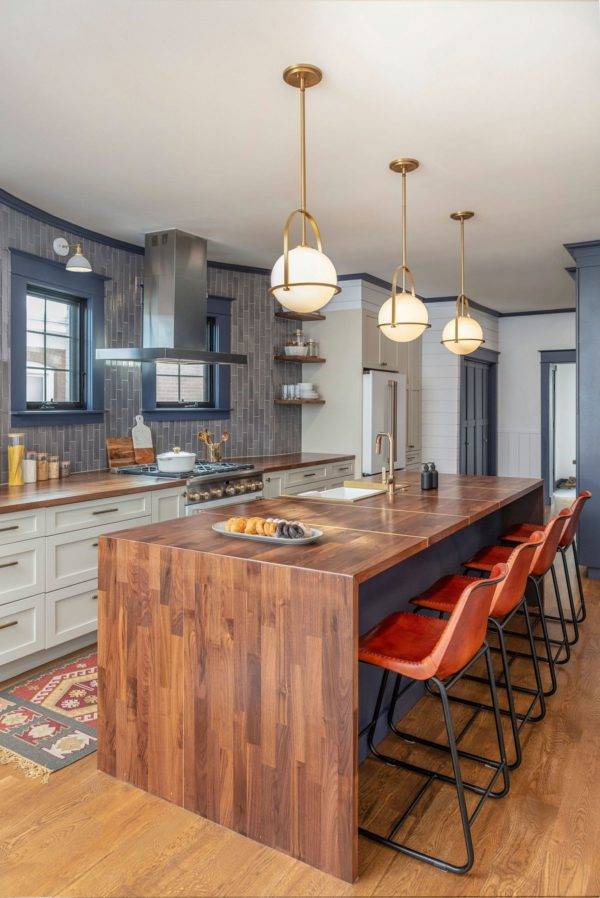
Cherry wood is another excellent option for kitchen islands, particularly in traditional or rustic kitchen settings. Cherry’s rich, warm tones deepen over time, developing a beautiful patina that adds character and elegance to the kitchen. While cherry is softer than some other hardwoods, it is still durable enough to withstand the rigors of kitchen use. It also works well with a variety of finishes, allowing homeowners to achieve the desired look, whether it’s a glossy finish for a more formal appearance or a matte finish for a more understated, natural look.
For those seeking a more exotic appearance, mahogany and teak are worth considering. Mahogany, with its deep reddish-brown color and fine, even grain, adds a touch of sophistication and timeless beauty to any kitchen. It is a durable hardwood that stands up well to moisture and wear, making it suitable for kitchen islands that see a lot of use. Teak, known for its exceptional durability and water resistance, is ideal for kitchen islands in humid environments or those near sinks and stovetops. Its golden-brown hue and smooth texture make it a striking choice for a kitchen island that doubles as a statement piece.
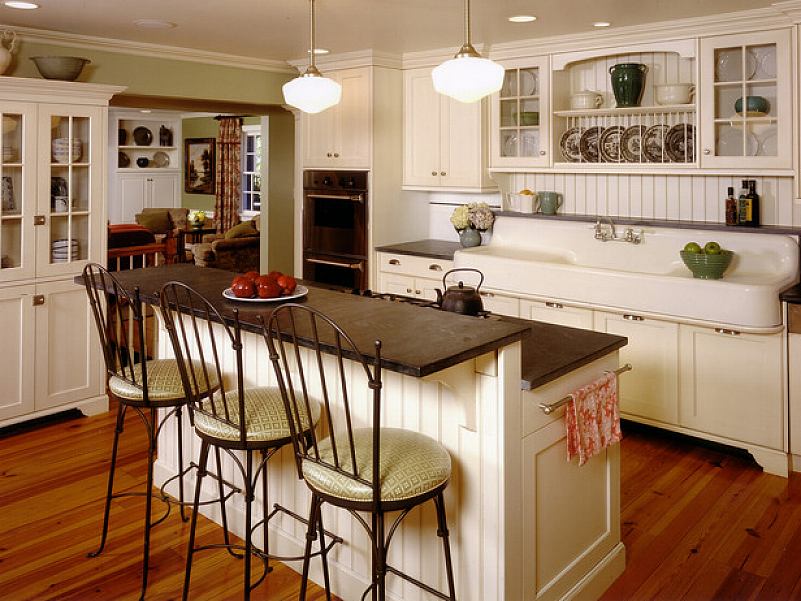
Butcher block is a popular wood choice for kitchen islands, especially for those who plan to use the island primarily for food preparation. Typically made from maple, oak, or cherry, butcher block is highly functional and adds a warm, rustic feel to the kitchen. It is easy to maintain, as minor scratches and cuts can be sanded out, and it can be regularly conditioned with mineral oil to prevent drying and cracking. However, butcher block requires more maintenance than other wood types to keep it looking its best, particularly if it is used as a cutting surface.
Bamboo, while technically a grass, is often considered as an alternative to traditional wood for kitchen islands. It is an eco-friendly option, as it is a rapidly renewable resource. Bamboo is also durable and resistant to moisture, making it a practical choice for kitchen environments. Its light, uniform appearance lends itself well to modern and minimalist kitchen designs. However, bamboo can be prone to scratches and dents, so it may not be the best choice for kitchen islands that will see heavy use.

Pine is a softer wood that is sometimes used for kitchen islands, particularly in country or farmhouse-style kitchens. Its light color and prominent knots give it a distinctive, rustic charm. Pine is also more affordable than many hardwoods, making it a good option for budget-conscious homeowners. However, because it is softer, pine is more susceptible to dents and scratches, and it may require more frequent refinishing to maintain its appearance.
When selecting the best wood for a kitchen island, it’s also important to consider the overall design and color scheme of the kitchen. The wood you choose should complement the cabinetry, flooring, and other elements in the space. For example, if your kitchen has dark cabinets, you might opt for a lighter wood like maple or oak to create contrast and prevent the space from feeling too heavy. Alternatively, if your kitchen features light cabinetry, a darker wood like walnut or mahogany can add depth and richness.
The finish applied to the wood also plays a crucial role in the island’s durability and appearance. A clear finish can highlight the natural beauty of the wood grain, while a stain can alter the wood’s color to better match the kitchen’s decor. For those who prefer a painted finish, choosing a wood with a smooth, even grain, such as maple, will provide the best results. It’s also important to select a finish that is resistant to moisture and heat, as the kitchen island is likely to be exposed to spills, steam, and other kitchen hazards.
Wood’s natural ability to absorb sound makes it a great material for kitchen islands in open-concept homes, where noise from the kitchen can carry into other living areas. A solid wood island can help dampen noise from clanging pots and pans or the hum of kitchen appliances, creating a quieter and more pleasant environment.

Cost is another factor to consider when choosing wood for a kitchen island. While high-end woods like walnut, cherry, and mahogany can be quite expensive, more affordable options like maple, oak, and pine offer a good balance of beauty and durability. It’s important to weigh the initial cost of the wood against its longevity and maintenance requirements. A more expensive wood that requires less maintenance and lasts longer may ultimately be more cost-effective than a cheaper option that needs frequent repairs or replacement.
In addition to solid wood options, engineered wood products like plywood and MDF (medium-density fiberboard) can also be used for kitchen islands. These materials are often more affordable and stable than solid wood, making them a good choice for homeowners on a budget. However, they may not offer the same level of durability or aesthetic appeal as solid wood, so it’s important to consider how they will be used and the overall look you want to achieve.
Finally, the source of the wood should be considered, particularly for those concerned about sustainability. Choosing wood from responsibly managed forests, certified by organizations like the Forest Stewardship Council (FSC), can help ensure that your kitchen island is not only beautiful and functional but also environmentally friendly. Additionally, reclaimed wood is an excellent option for those looking to add character to their kitchen while minimizing their environmental impact. Reclaimed wood often comes from old barns, factories, or other structures, and it carries a unique history and charm that can’t be replicated with new wood.

Common Mistakes to Avoid
Common mistakes to avoid when selecting wood for a kitchen island include failing to consider the wood’s durability and maintenance requirements. For example, choosing a softwood like pine for a high-traffic kitchen island may result in frequent dents and scratches, leading to frustration and additional maintenance costs.
Another mistake is not matching the wood with the overall kitchen design. A wood that clashes with the cabinetry, flooring, or countertops can create a disjointed look, detracting from the kitchen’s overall aesthetic. It’s also important to avoid choosing wood solely based on price. While it may be tempting to opt for the cheapest option, this can result in a kitchen island that doesn’t hold up over time or requires costly repairs.
Finally, not considering the environmental impact of the wood is a mistake for those concerned about sustainability. Choosing wood from non-sustainable sources or failing to consider reclaimed options can contribute to deforestation and environmental degradation.

What is the best wood for a kitchen island used primarily for food preparation?
Maple is often considered the best wood for kitchen islands used primarily for food preparation. Its durability, resistance to wear and smooth grain make it an excellent choice for butcher block countertops. Additionally, maple is easy to maintain, with minor scratches and cuts being easy to sand out. Regular conditioning with mineral oil helps keep the wood in top condition, making it a practical and functional choice for kitchens where the island will see heavy use.
How do I choose the right wood for my kitchen island?
Choosing the right wood for your kitchen island involves considering factors such as durability, maintenance, aesthetics, and cost. Think about how you plan to use the island: if it will be a high-traffic area, you’ll need a durable wood like maple or oak. If aesthetics are a priority, walnut or cherry may be better options. Additionally, consider the overall design of your kitchen, including the color and style of your cabinets, flooring, and countertops, to ensure the wood complements these elements.
Is bamboo a good choice for a kitchen island?
Bamboo is an excellent choice for kitchen islands, especially for those seeking an eco-friendly option. It is a rapidly renewable resource, making it a sustainable choice. Bamboo is also durable and resistant to moisture, which is crucial in a kitchen environment. Its light, uniform appearance works well in modern or minimalist kitchens. However, bamboo can be prone to scratches and dents, so it may not be the best choice for kitchens where the island will see heavy use.

What are the maintenance requirements for a butcher block kitchen island?
Butcher block kitchen islands require regular maintenance to keep them looking their best. This includes frequent cleaning with mild soap and water and regular conditioning with mineral oil to prevent the wood from drying out and cracking. Minor scratches and cuts can be sanded out, but deeper gouges may require professional repair. Additionally, it’s important to avoid exposing the butcher block to excessive moisture or heat, as this can damage the wood.
Is reclaimed wood a good option for a kitchen island?
Reclaimed wood is an excellent option for a kitchen island, particularly for those seeking a unique, character-rich appearance. Reclaimed wood often comes from old barns, factories, or other structures, giving it a history and charm that new wood can’t replicate. It’s also an environmentally friendly choice, as it repurposes wood that might otherwise go to waste. However, reclaimed wood can be more expensive and may require more maintenance to keep it in good condition.
How does the finish affect the durability of a kitchen island?
The finish applied to the wood significantly affects the durability and appearance of a kitchen island. A clear finish can enhance the natural beauty of the wood grain, while a stain can alter the wood’s color to better match the kitchen’s decor. It’s important to choose a finish that is resistant to moisture, heat, and everyday wear and tear, as kitchen islands are exposed to a variety of environmental factors. A high-quality finish can protect the wood from damage and extend the life of the kitchen island.

Kitchen Island Complete With Wood Cabinetry
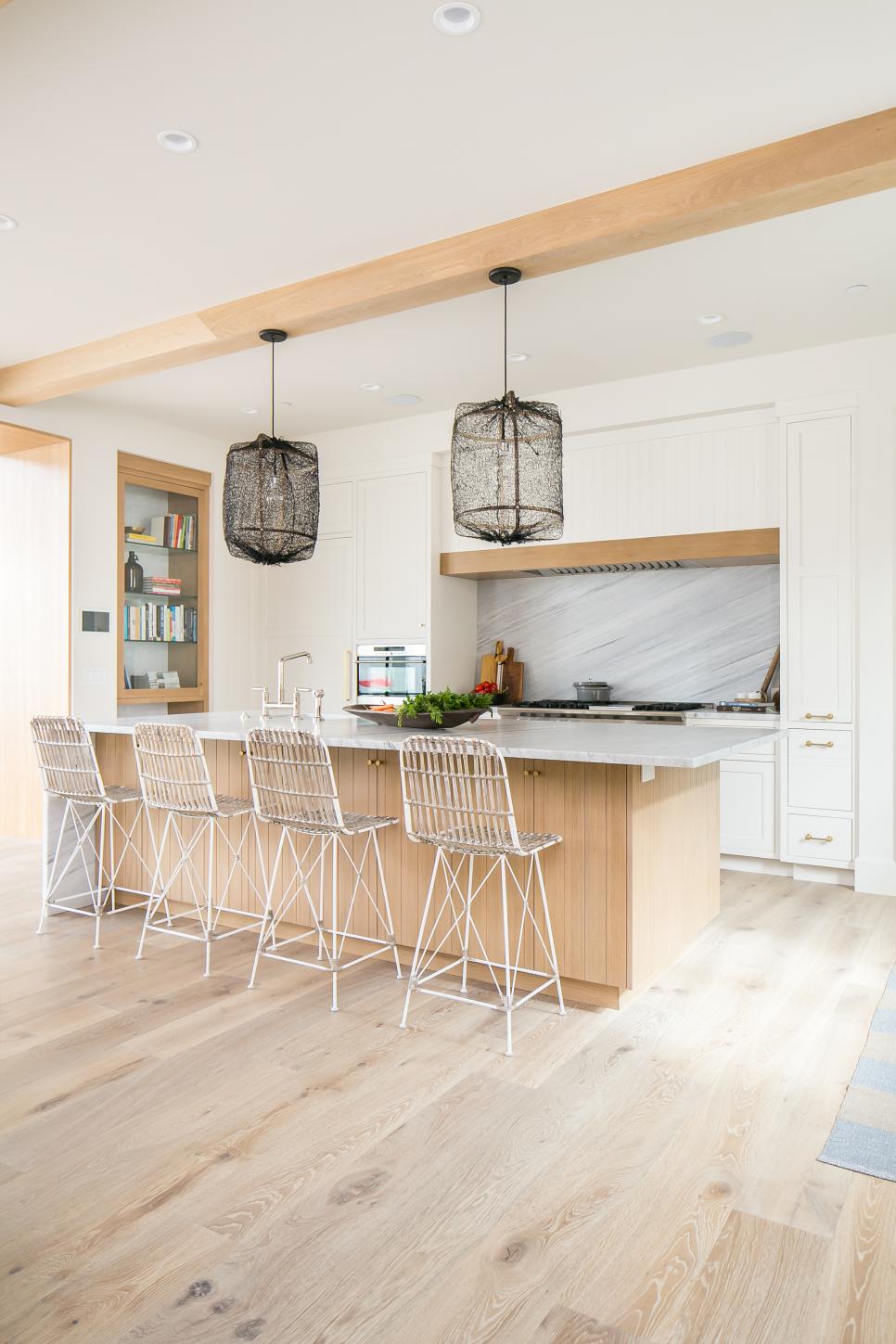
Wood Grain For Cute Solid Surface Countertops

Kitchen Island – Ideal Wood Works Inc.
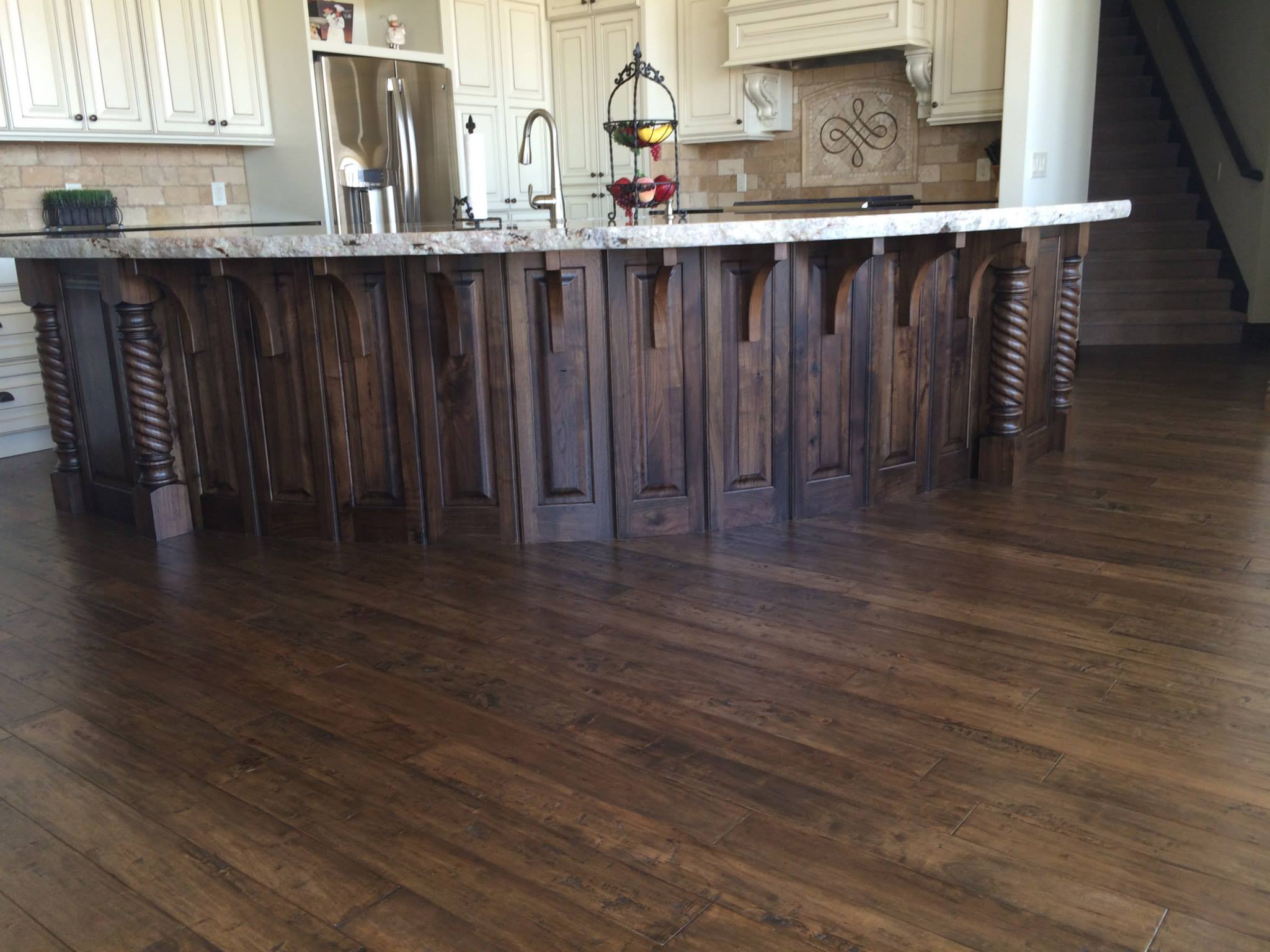
Unique Kitchen Island Designs
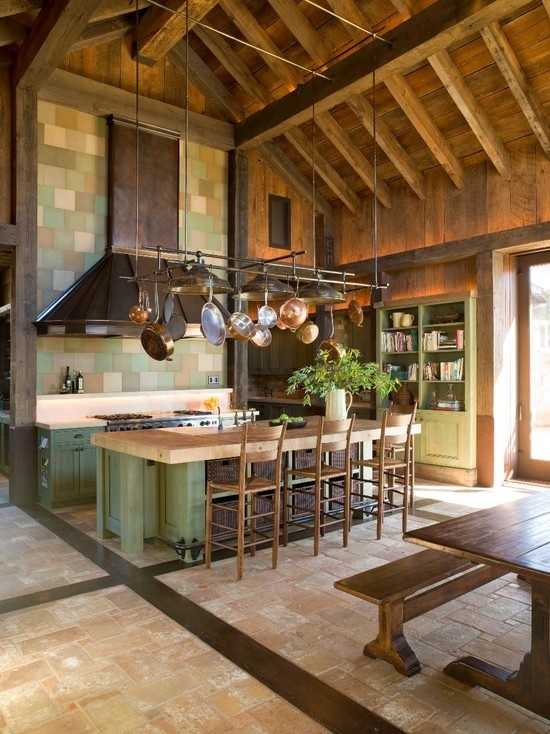
Related Posts: